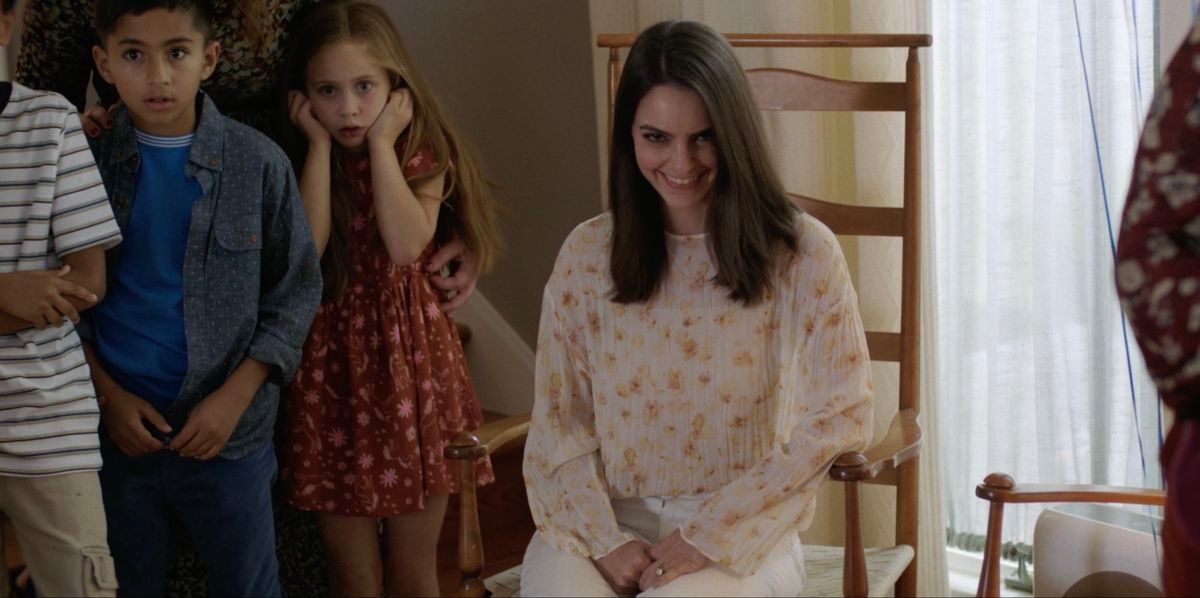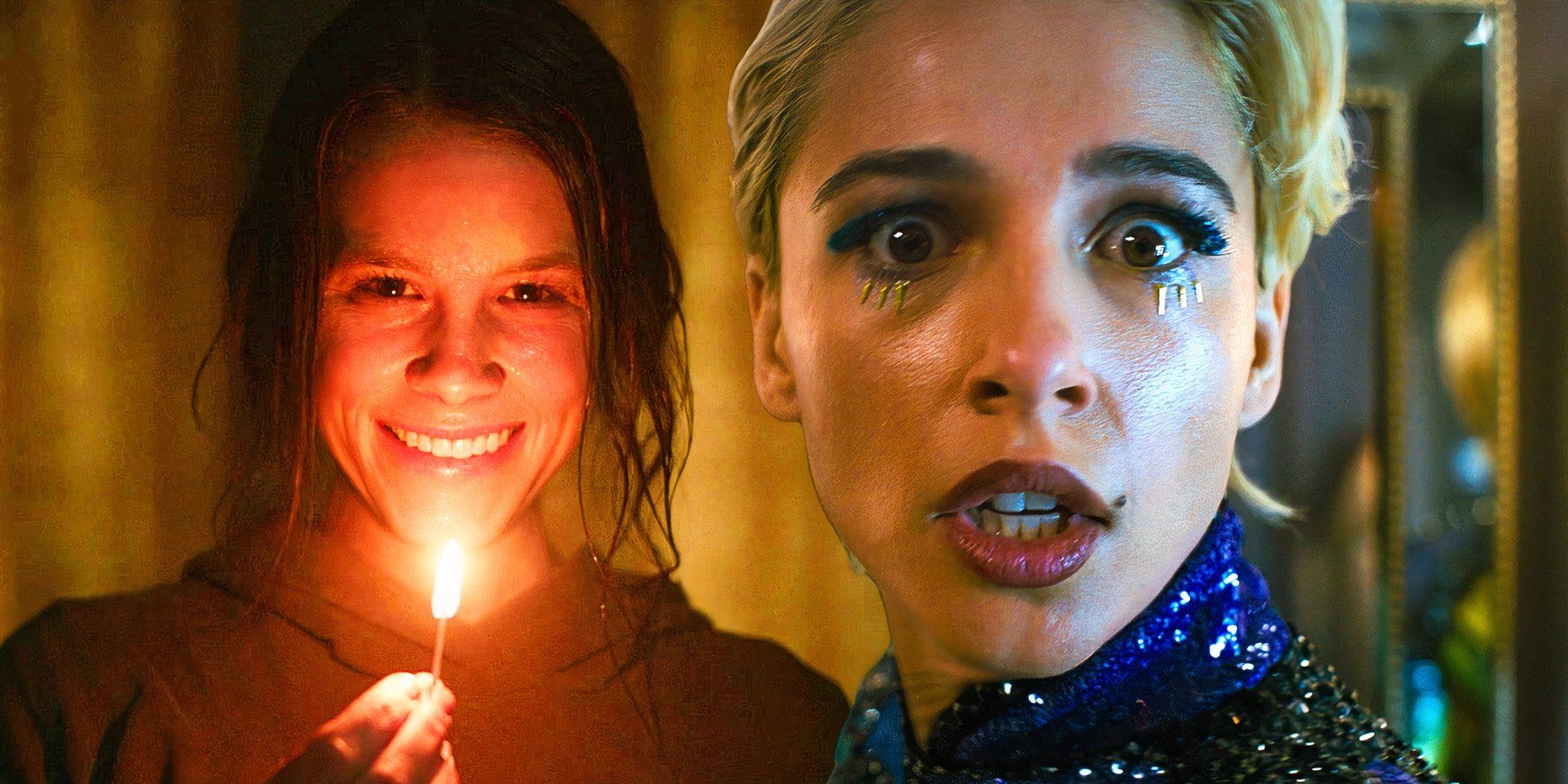Neat Info About Was Rose Hallucinating In Smile

Roseanne Park Rosé Blackpink Smile, Smile Blackpink,
The Lingering Question
1. Unpacking the Psychological Horror of Smile
Okay, let's dive into the creepy, unsettling world of Smile. Remember Rose Cotter, the therapist haunted by a smiling curse? The movie throws a lot at us, and one of the biggest questions swirling around is whether Rose was experiencing hallucinations, a full-blown mental breakdown, or something far more sinister. It's not just about jump scares; it's about the unraveling of a mind under immense pressure.
Consider Rose's profession. She's a therapist, trained to analyze and understand the human psyche. Yet, she's completely blindsided by the entity latching onto her. This adds a layer of tragic irony. Is her rational mind fighting a losing battle against a supernatural force? Or is she, perhaps subconsciously, succumbing to the very mental illnesses she treats?
The film masterfully blurs the lines between reality and perception. We see events unfold through Rose's eyes, but can we trust what she sees? The smiling figures are undeniably unsettling, but are they physically present, or are they projections of Rose's trauma and guilt? The ambiguity is what makes the movie so disturbing and keeps us pondering long after the credits roll.
Think about it: Rose is dealing with her own unresolved childhood trauma, the suicide of her mother, and the pressures of her demanding job. That's a cocktail of stress that could easily trigger a mental health crisis. Could the "smile curse" be a manifestation of her internal struggles, amplified by a malevolent entity? It's a question worth chewing on.

Decoding Rose's Descent
2. Analyzing the Evidence for Hallucinations
Let's examine some clues that might suggest Rose was hallucinating. Firstly, the smiles themselves. They're exaggerated, unnatural, and deeply unsettling. They feel more like caricatures of happiness, twisted into something grotesque. This could be interpreted as a visual representation of Rose's distorted perception of reality, fueled by anxiety and paranoia.
Then there's the isolation. Rose's friends and colleagues dismiss her claims, attributing her behavior to stress or a mental breakdown. Her fianc, Trevor, becomes increasingly skeptical, further isolating her and fueling her sense of unease. This isolation could exacerbate any existing mental health issues, leading to a downward spiral of delusion and paranoia.
Consider the timeline of events. The curse is triggered by a traumatic experience — witnessing the suicide of Laura Weaver. This traumatic event could have acted as a catalyst, unlocking repressed memories and triggering a psychotic break. The smiling entity could be a manifestation of Rose's unresolved trauma, projected onto the world around her.
Furthermore, the film employs several visual and auditory cues that suggest Rose's perception is unreliable. Distorted camera angles, unsettling sound design, and dreamlike sequences all contribute to a sense of unease and ambiguity. These elements could be interpreted as visual representations of Rose's fractured mental state, blurring the lines between reality and hallucination.

Secret Smile UK Potted Rose Colin Gregory Roses Ltd
The Counter-Argument
3. Exploring the Supernatural Explanation
But wait! What if it wasn't just in her head? What if the smiling entity was genuinely a supernatural force preying on vulnerable individuals? The film provides several hints that suggest a more sinister explanation. The curse is transferable, passed on through witnessing trauma. This implies an external force at play, rather than simply individual mental illness.
Think about the research Rose conducts. She uncovers a pattern of similar suicides, all preceded by the same unsettling smiles. This suggests that she's not alone in experiencing this phenomenon, and that there's a larger, more sinister force at work. The consistent pattern of events strengthens the argument for a supernatural entity rather than individual psychosis.
Furthermore, the entity seems to have a level of sentience and manipulation. It targets Rose's vulnerabilities, exploiting her trauma and fears. This suggests a malevolent intelligence at work, rather than simply a random manifestation of mental illness. The entity's ability to manipulate Rose's perception and exploit her weaknesses points to a more complex and sinister force.
Consider the final confrontation. Rose confronts the entity in her childhood home, a place filled with painful memories. This suggests that the entity is feeding off her trauma, drawing power from her unresolved pain. The final scene, in which the entity seemingly consumes Rose, further reinforces the idea of a supernatural force rather than simply a mental breakdown.

Final Fantasy 16's Xbox Release May Have Just Been Confirmed
Smile
4. The Significance of "Smile" as a central motif
So, about that keyword, "Smile." It's not just a facial expression; it's a symbol of profound unease and hidden suffering. In the context of the film, the smile represents a mask, concealing the pain and trauma that festers beneath the surface. It's a visual representation of the disconnect between outward appearances and inner turmoil. The noun "Smile" becomes the very essence of the horror.
The smiling figures in the movie are not expressions of happiness; they're expressions of impending doom. They're a warning sign, a harbinger of tragedy. The exaggerated, unnatural smiles are deeply unsettling, conveying a sense of malevolence and impending violence. The "Smile" becomes a visual trigger, evoking feelings of fear and anxiety.
Think about how the smile is used throughout the film. It's often juxtaposed with moments of intense pain and suffering. This contrast creates a sense of cognitive dissonance, highlighting the absurdity and cruelty of the curse. The "Smile" becomes a symbol of the entity's power, its ability to manipulate and control its victims.
Therefore, "Smile" isn't just a keyword; it's the key to understanding the film's core themes. It represents the hidden pain, the unresolved trauma, and the insidious nature of mental illness. It's a reminder that appearances can be deceiving, and that the most terrifying monsters often wear the friendliest faces. The "Smile," in its unsettling form, imprints itself in our minds, long after the movie ends.

Final Thoughts
5. The Power of Ambiguity in Smile
Ultimately, Smile leaves the question of Rose's sanity deliberately ambiguous. The film presents compelling evidence for both a psychological breakdown and a supernatural entity. This ambiguity is what makes the movie so effective, forcing viewers to confront their own beliefs about mental health and the existence of the supernatural.
Whether Rose was hallucinating or genuinely haunted, the film serves as a powerful exploration of trauma, guilt, and the insidious nature of mental illness. It challenges us to question our perceptions of reality and to consider the possibility that there may be forces beyond our understanding at work in the world. The movie lingers because it leaves the audience with questions, rather than easy answers.
Perhaps the most terrifying aspect of Smile is the idea that the line between reality and hallucination is not always clear. That even a trained professional, like Rose, can be susceptible to the power of suggestion and the insidious influence of trauma. It forces us to confront the limitations of our own perception and the fragility of the human mind. And lets face it, thats a scary thought!
So, was Rose hallucinating? Maybe. Maybe not. And perhaps that's the point. The power of Smile lies in its ambiguity, in its ability to make us question what we see, what we believe, and what we fear. And that, my friends, is a hallmark of truly effective horror.
Frequently Asked Questions (FAQs) About Smile
6. Q
A: That's the million-dollar question! The movie never explicitly defines the entity. Is it a demon? A psychological manifestation? The filmmakers intentionally keep it vague, adding to the mystery and horror. It seems to feed off trauma and spread through witnessing traumatic events, but its true nature remains elusive.
7. Q
A: The smile is a brilliant choice because it's inherently unsettling when divorced from genuine happiness. It creates a disturbing dissonance. Plus, smiles are social cues, and to see that turned into something menacing is deeply unsettling. It takes something familiar and makes it monstrous.
8. Q
A: The film strongly suggests that the only way to break the chain is to ensure someone else witnesses a suicide, passing on the curse. Rose, in her final act, chooses to end the cycle by isolating herself, but tragically fails. The film emphasizes the difficulty of escaping trauma's grip.
